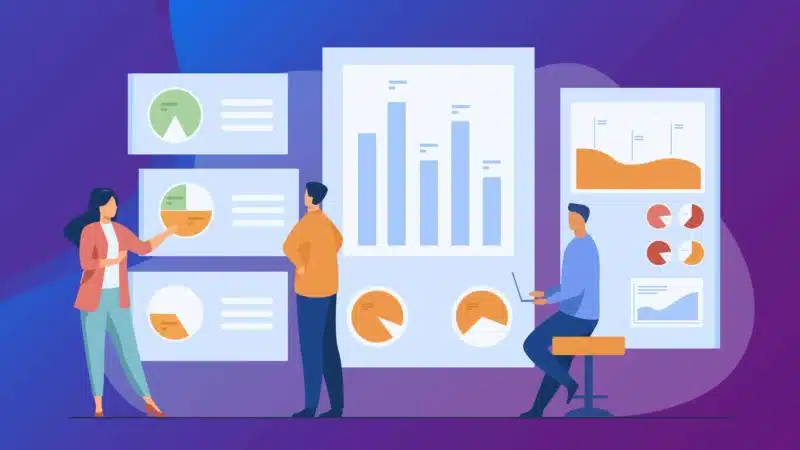Opinions expressed in this article are those of the sponsor. MarTech neither confirms nor disputes any of the conclusions presented below.
5 B2B marketing trends to address in 2021
B2B marketers must embrace the acceleration of digital, AI and automation, and customer-centricity. See how to stay competitive.

The COVID-19 pandemic caused B2B marketers to make many adjustments and re-examine their strategies and processes. Thus, the B2B marketing landscape looks different now than at the beginning of last year. The pandemic caused some trends to accelerate and move to the forefront and made marketers look at others in a new light.
Bearing that in mind, let’s examine five trends for B2B marketers to address in the upcoming year (and perhaps beyond).
1) The acceleration of digital
With in-person events not an option, marketers turned to virtual events, videos, and digital marketing channels to connect with customers. More than ever, online content has become the name of the game: emails, blogs, webinars, and more.
According to The CMO Survey from June 2020, 85% of marketers surveyed observed an openness among customers to new digital offerings during the pandemic, and 84% placed an increased value on digital experiences.
While digital tactics might only have been part of an overall strategy before, now B2B marketers must embrace more of a digital-first focus to stay relevant and competitive.
2) The importance of content marketing
With digital accelerating, content marketing is also increasing in importance, as customers and prospects are consuming more and more digital content. What type of content are people responding to?
Statista found in August 2020 that 27.2% of worldwide viewers watched more than 10 hours of online videos on a weekly basis.
Short, informative videos can make a point clearly and powerfully.
Videos, however, aren’t the only option available. Webinars have taken the place of live events during the pandemic. 2020 saw the average amount of time an American age 12 and older spent listening to podcasts rise to 6 hours and 39 minutes, according to statistics from Edison Research and Triton Digital.
Infographics, quizzes, surveys, and more interactive content can help your brand stand out, and the use of virtual reality (VR) or augmented reality can immerse your audience in your brand.
The written word also remains important, as B2B marketers reach out via emails or publish thought leadership and blogs. As more online content is produced, more investment and emphasis must be placed on SEO and SEM, especially in three key areas:
- Semantic search – A search that focuses on the meaning of search queries rather than simply on keyword matching
- Search intent – The primary goal of a search query
- Voice search – Using a voice command for a search query
3) AI-powered marketing and marketing automation
AI and machine learning and marketing automation tools help marketing teams do more with less, saving on budget and expanding their reach. It can aid in targeting, segmentation, personalization, lead scoring, predictive analytics, and even generating content.
Statista states that the global AI software market will see about 54% growth year after year. Eventually, it will reach approximately $22.6 billion, with widespread adoption across the business world.
More and more organizations will come to utilize AI and automation rather than be left behind by their competition.
4) Customer-centric marketing builds customer relationships
COVID-19 forced many marketers to place emphasis on providing customers with helpful information and solutions rather than simply generating leads. Empathy drove their outreach efforts and how they approached the customer experience (CX).
Marketers also focused on retaining current customers rather than only trying to gain new ones. Retention marketing played a huge role in keeping current customers engaged and building a deeper and longer-lasting relationship with them.
Personalization and relevant content help show that marketers understand customers, their pain points, and what they’re going through. It can build on the already existing business relationship, as account-based marketing (ABM) does.
5) Account-based marketing becomes more prevalent
Rather than casting a wide net and targeting an entire industry, professionals working in ABM focus their marketing and sales efforts on only a few key accounts. It allows for stronger personalization and event individualization in marketing, which can help drive more conversions.
Research by Terminus, however, from 2019 found that 23% of their respondents had no active ABM program. In 2020, that number had gone down to 5.8%.
In the past year, though, ABM came into more prominence with retention marketing also becoming a larger priority (as mentioned above). Since ABM only focuses on several key accounts, marketers and salespeople can concentrate just on depending and improving their relationships with those accounts.
Success in such a venture requires not only an alignment between sales and marketing, but an integration and committed effort to be there for customers during difficult times and provide answers and solutions personalized and tailored for them.
B2B marketers must embrace change
2020 saw many B2B marketers pivoting and changing their strategies. Agility allows them to shift and tweak their approach when necessary. However, B2B marketers should always be looking at their analytics and seeing how they can improve and what is working and what can be dropped.
The use of A/B and multivariate testing can help them see what content audiences respond to and what they don’t, what channels they prefer, and offers and information are piquing their interest. It can show marketers when they should change direction.
A B2B marketer can always improve and strive to better connect with customers. They should get to know their audience with the data they have and always ask what they can do to help.
Related stories
New on MarTech
